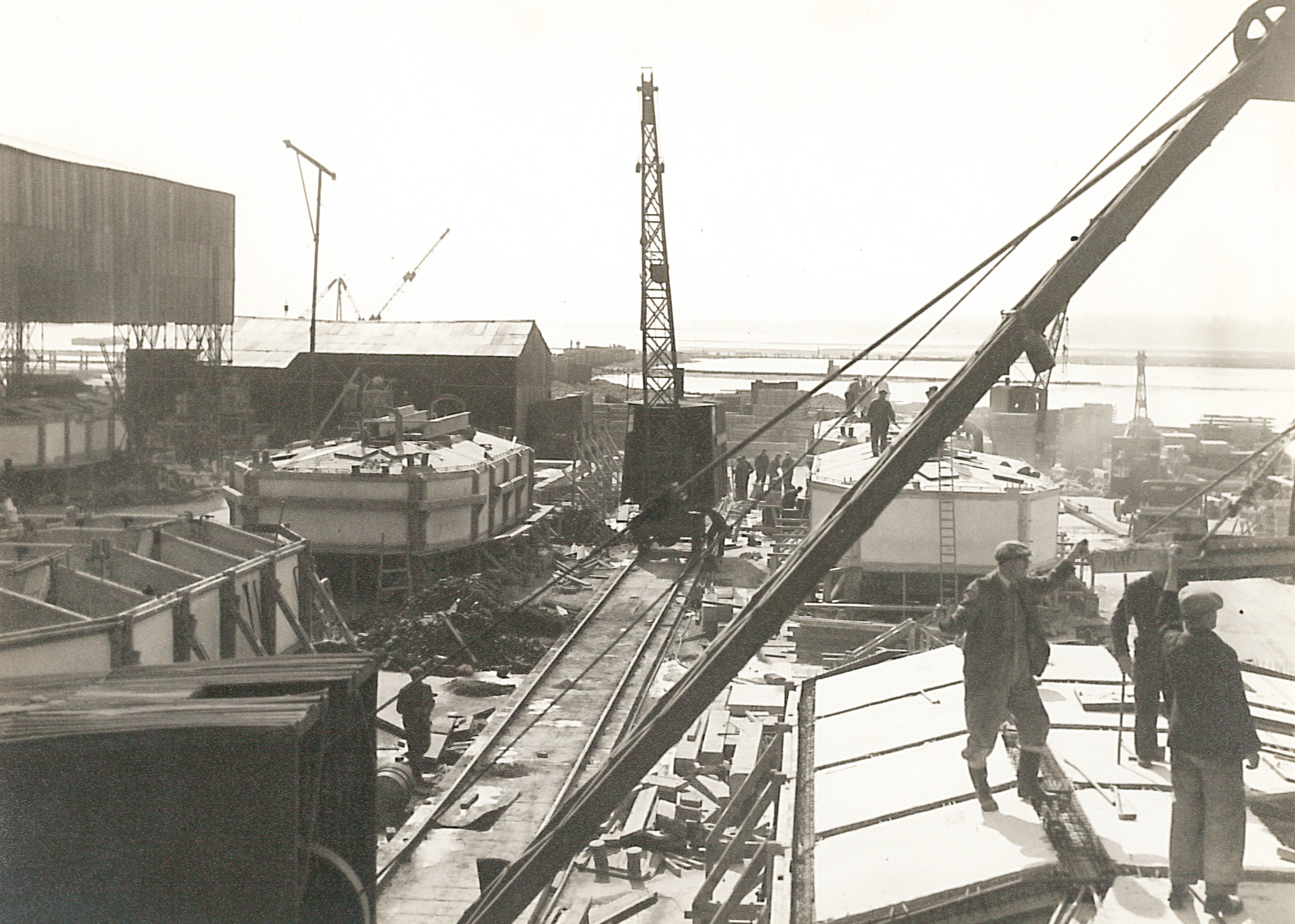The harbours were a system of floating docks and pontoons that allowed Allied troops, supplies and vehicles to travel directly from transport ships to the beaches of Normandy, avoiding the use of amphibious landing craft. They were designed and constructed at yards and docks across the country in secrecy by around 200,000 British engineers in the seven months leading up to D-Day. Upon completion of construction, they were assembled at Selsey in Sussex and towed across the channel to Normandy in sections.
Although two of the Mulberry harbours were built, one of them was destroyed in a storm just a few days into operation. The second, however, remained in service for 10 months, allowing 2.5 million men, 500,000 vehicles and four million tonnes of supplies to land in northern France. Without this harbour, the logistical effort to supply the frontlines across Europe would have looked very different, and it remains one of the most pivotal engineering achievements of the war effort.
“When you think of inventions during the Second World War you think of the bouncing bomb, you think of radar, but for my money Mulberry harbours are right up there,” said historian and author Guy Walters. “They’re a classic example of British ingenuity and inventiveness.”

The archive footage of the structures comes courtesy of Wates Group, a British company that supplied the concrete pier and pierhead pontoons for the Mulberry harbours. Wates worked with D-Day Revisited – a charity established to commemorate the anniversary – to create a film celebrating the harbours and the British servicemen and women who used them.
“When I look back on my career in the Navy, I felt I spent more time fighting the sea than I did the Germans,” said 95-year-old Ted Cordery, who served on board HMS Belfast from 1943-1944 as a Leading Seaman Torpedoman.
“You could never rely on it. It always turned one way or the other. The harbours minimised the possibility of this and you can’t have a better contribution than that in my opinion.”





Project to investigate hybrid approach to titanium manufacturing
What is this a hybrid of? Superplastic forming tends to be performed slowly as otherwise the behaviour is the hot creep that typifies hot...